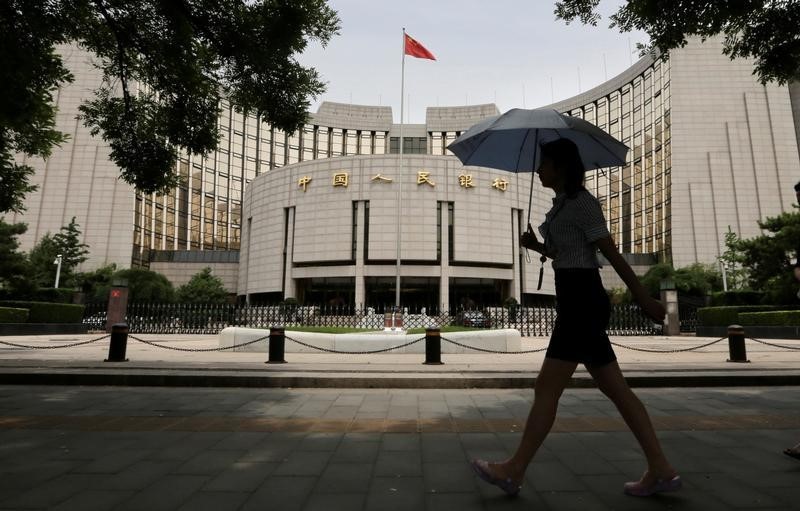 © Reuters. China should push market-based financial reforms: central bank adviser
© Reuters. China should push market-based financial reforms: central bank adviserBEIJING (Reuters) – China’s central bank policy adviser Huang Yiping said on Wednesday that bank lending rates in China should be market-based and that policymakers should not rely on administrative measures to lower funding costs.
Policymakers should push market-based financial reforms while improving supervisory systems, Huang, a professor at Peking University, said at a financial forum in Beijing.
China has moved to liberalize deposit and lending rates over the past decade, but the state-led banking sector still faces significant government involvement, from setting of lending quotas to directing lending into favored industries.
Borrowing costs in China have risen this year as the government tries to squeeze out speculative lending and a further rise in debt levels. Some analysts say higher interest rates from the deleveraging drive will hurt small, private firms.
However, Huang said that artificially low interest rates can lead banks to lend less to borrowers seen as higher risk.
“There are benefits from low financing costs but the basic concept is that costs should cover risks. If we keep costs too low, entities with higher risks and higher potential returns are excluded from the market,” Huang said.
“We cannot simply say that the strength of support for the real economy has increased if financing costs are lower.”
Huang also said China should no longer use the amount of credit issued to measure support for the real economy.
The government is looking to promote lending to the real economy and away from property and financial speculation.
It has recently offered incentives for banks to lend to small firms including lower reserve requirements and tax-free interest income.
Fusion Media or anyone involved with Fusion Media will not accept any liability for loss or damage as a result of reliance on the information including data, quotes, charts and buy/sell signals contained within this website. Please be fully informed regarding the risks and costs associated with trading the financial markets, it is one of the riskiest investment forms possible.
Source: Investing.com




























